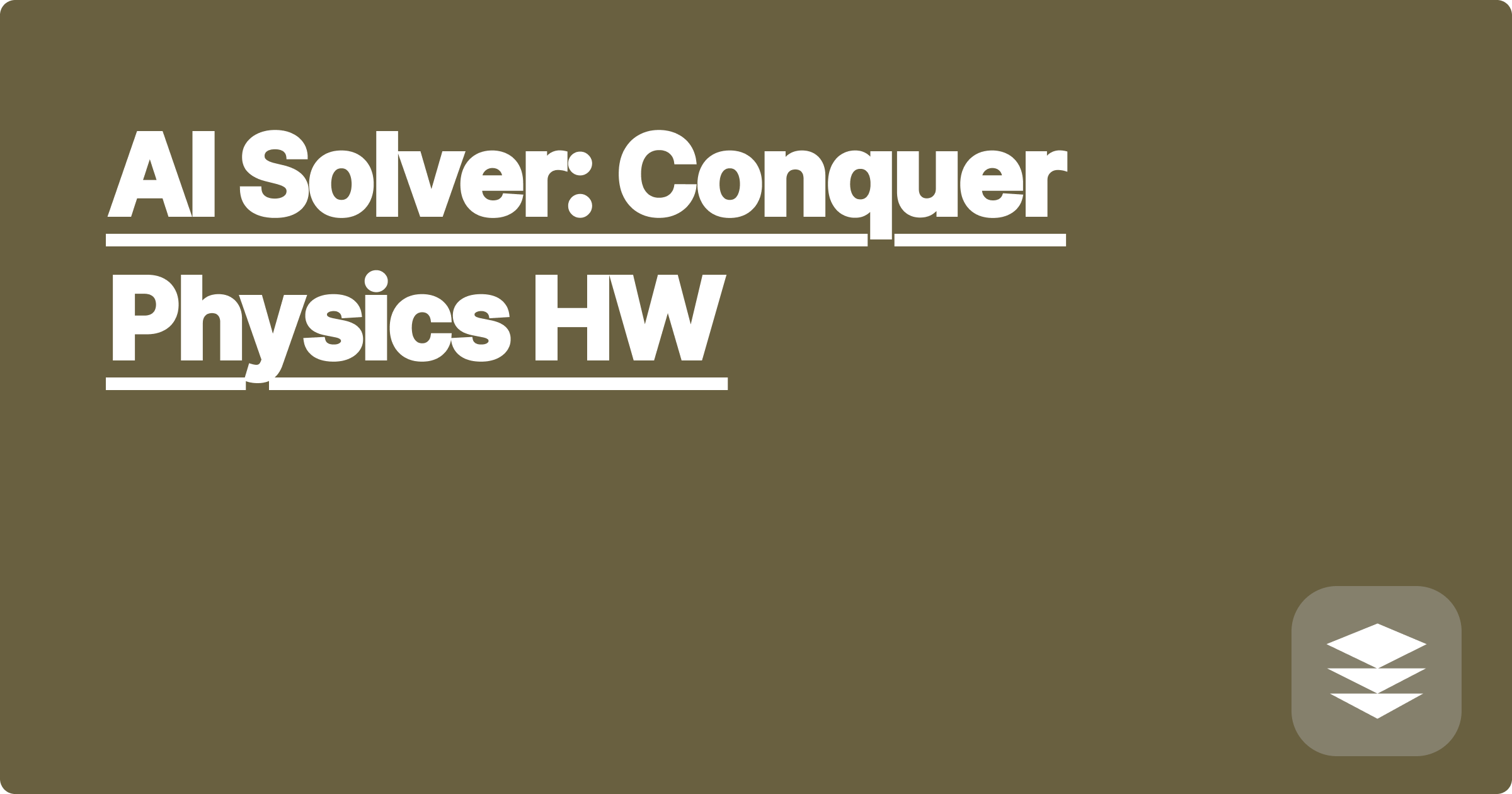
The ever-increasing complexity of STEM coursework, particularly in physics, presents a significant challenge for students and researchers. Grappling with intricate concepts, complex equations, and time-consuming problem-solving can be daunting. Artificial intelligence (AI) is emerging as a powerful tool to help navigate these difficulties, offering novel approaches to understanding and solving complex physics problems. AI can provide step-by-step solutions, explain underlying concepts, and even generate practice problems, transforming how students learn and researchers explore.
This innovative application of AI has profound implications for the future of STEM education and research. By leveraging AI's capabilities, students can gain a deeper understanding of physics principles, improve problem-solving skills, and ultimately achieve academic success. Researchers can use AI to accelerate their work, explore new avenues of inquiry, and push the boundaries of scientific discovery. This shift towards AI-assisted learning and research promises to revolutionize how we approach STEM fields, making them more accessible and efficient.
Physics, as a fundamental science, explores the nature and properties of matter and energy. It involves intricate concepts such as mechanics, electromagnetism, thermodynamics, and quantum mechanics. These concepts are often expressed through complex mathematical equations and require rigorous problem-solving skills. Students frequently struggle with applying these theoretical concepts to practical problems, often finding themselves overwhelmed by the sheer volume and complexity of the material. Traditional learning methods, while valuable, may not always provide the personalized support and interactive learning experiences needed to fully grasp these challenging concepts. This gap between theoretical understanding and practical application represents a significant hurdle for many students pursuing physics education.
Furthermore, research in physics often involves complex simulations, data analysis, and the development of new theoretical models. These tasks can be computationally intensive and time-consuming, hindering the pace of scientific progress. The need for efficient and accurate tools to assist in these complex processes is paramount. AI offers a potential solution by providing powerful algorithms and computational resources to tackle these challenges, enabling researchers to focus on the more creative and insightful aspects of their work.
AI tools like ChatGPT, Claude, and Wolfram Alpha provide a powerful approach to solving complex physics problems. ChatGPT and Claude, for instance, can be used to explain concepts, derive equations, and even generate practice problems. Wolfram Alpha, with its computational prowess, can solve complex equations, perform symbolic calculations, and provide visualizations of physical phenomena. These tools offer a dynamic and interactive learning experience, allowing students to explore physics concepts in a more engaging and intuitive way.
By leveraging the natural language processing capabilities of ChatGPT and Claude, students can ask questions in plain English and receive detailed explanations tailored to their specific needs. This personalized approach to learning fosters a deeper understanding of the underlying principles. Wolfram Alpha's computational engine can handle complex calculations and symbolic manipulations, freeing students from tedious manual computations and allowing them to focus on the underlying physics.
To use these AI tools effectively, start by clearly defining the problem you want to solve. This might involve stating the given parameters, the unknown variables, and the relevant physical principles. Next, formulate your query in a clear and concise manner, using language that the AI can understand. For example, you might ask ChatGPT to "explain the concept of conservation of energy" or ask Wolfram Alpha to "solve the equation for projectile motion with an initial velocity of 20 m/s and an angle of 30 degrees."
Once you have received the AI's response, carefully analyze the results. Verify the units, check the logic of the solution, and compare the results with your own understanding of the problem. If the results seem incorrect or unclear, rephrase your query or try a different AI tool. This iterative process of querying, analyzing, and refining allows you to effectively leverage the power of AI for physics problem-solving.
Consider the problem of calculating the trajectory of a projectile launched at an angle. You can input the initial velocity, angle, and gravitational acceleration into Wolfram Alpha. The platform will then output the trajectory equation, maximum height, range, and flight time. For a more conceptual understanding, you could ask ChatGPT to "explain the forces acting on a projectile in motion," receiving a detailed explanation of gravity, air resistance, and their impact on the projectile's path.
Another example is analyzing circuits. You can provide Wolfram Alpha with the circuit diagram and component values. It can then calculate the current, voltage, and power across each component. To delve deeper into the theory, you could ask ChatGPT to "explain Kirchhoff's laws" and receive a comprehensive explanation of these fundamental circuit analysis principles.
To maximize the benefits of AI in your physics studies, actively engage with the tools. Don't simply rely on them for answers; use them to deepen your understanding. Ask "why" questions, explore different scenarios, and challenge the AI's responses. This active learning approach will solidify your understanding of the underlying physics.
Combine AI tools with traditional learning methods. Use textbooks, lectures, and problem sets to build a strong foundation, and then use AI to reinforce your learning and explore more complex applications. This blended approach will provide a well-rounded education.
Conclude by emphasizing the importance of critical thinking and independent verification. While AI tools are powerful, they are not infallible. Always double-check the results, understand the underlying principles, and develop your own problem-solving skills. By combining the power of AI with your own critical thinking, you can unlock your full potential in physics and achieve academic success. Start exploring these AI tools today and experience the transformative power of AI-assisted learning in physics.
AI Homework Help: STEM Made Easy
Ace STEM Exams: AI Study Guide
AI for Lab Reports: Data Analysis